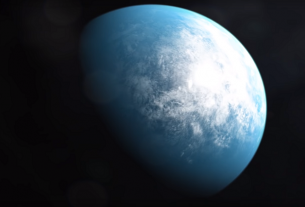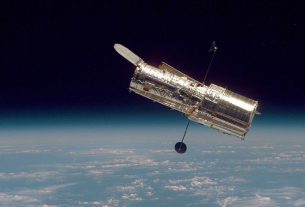The construction of the James Webb Telescope had lagged far behind, but the big moment is finally over: the instrument is fully assembled. An important step that brings us a little closer to its launch.
Launched in 1990, the Hubble telescope revolutionized our vision of the Universe. But after more than 20 years of loyal service, the time is soon to retire. To succeed him, NASA imagined the James Webb Telescope (JWST), an instrument 100 times more powerful. It was a long road strewn with pitfalls. Major technical and (mainly) budget problems led mission leaders to postpone its launch several times. But we are starting to see the end of the tunnel. A few days ago, NASA announced that the two halves of the JWST (the telescope and the mirrors on one side – the sun visor and the ship on the other) were finally assembled.
“The assembly of the telescope and its scientific instruments, sun visor and spacecraft into a single observatory is an incredible achievement for the entire Webb team,” said Bill Ochs, Project Manager at Goddard Space Flight Center. From NASA. This milestone symbolizes the efforts of thousands of dedicated individuals for more than 20 years through NASA, the European Space Agency, the Canadian Space Agency, Northrop Grumman and other industry and academic partners. “
More tests
The two main components of the telescope had been individually tested successfully. It will now be a question of testing them assembled. Environmental tests (imitation of space conditions) and additional deployment are already planned. Especially concerning the sun visor of the telescope, which had some problems two years ago. Several tears had indeed been discovered in polyimide sheets coated with silicon and aluminum. The instrument has since been redesigned. The goal will be to ensure its proper operation on the fully assembled telescope.
Beautiful discoveries in perspective
If all goes as planned – in other words, without additional constraints – the James Webb Telescope should finally be launched in March 2021. Positioned then 1.5 million kilometers from the Earth. The telescope, capable of observing the cosmos in the mid-infrared, will be endowed with previously unmatched capabilities, promising us incredible discoveries. Astronomers will indeed be able to observe some of the first stars and galaxies of the Universe. We can also focus on the nearest exoplanets, in order to assess the presence (or not) of the atmosphere.




